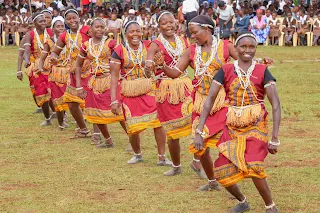African Women Dancers clothing
A Cultural Tapestry Woven with Grace and Resilience
The Rich History of African Dance
A. Origins and Traditions:
1. Ancient roots: tracing the origins of African dance back to pre-colonial times, where it served as a form of communication, storytelling, and celebration.
2. Cultural diversity: exploring the myriad dance traditions across the African continent, from the energetic rhythms of West African drumming to the graceful movements of East African ballet.
3. Spiritual significance: delving into the spiritual dimensions of African dance, where movements are imbued with meaning and symbolism, connecting dancers to their ancestors and the natural world.
1. Matrilineal societies: highlighting the pivotal role of women in preserving and transmitting dance traditions from generation to generation.
2. Rituals and ceremonies: examining the sacred rituals and ceremonies where women play a central role as dancers, healers, and spiritual leaders.
3. Passing the torch: exploring how African women dancers serve as custodians of cultural heritage, passing down movements, songs, and stories to future generations.
A. Community and Celebration:
1. Social cohesion: discussing how dance fosters a sense of community and belonging, bringing people together to celebrate life's milestones, from births and weddings to harvest festivals and rites of passage.
2. Cultural identity: examining how African dance serves as a powerful expression of cultural identity, reinforcing shared values, beliefs, and traditions.
3. Healing and transformation: exploring the therapeutic aspects of dance, where movement and music are used to heal physical ailments, alleviate emotional distress, and foster personal growth.
B. Empowerment and Expression:
1. Agency and empowerment: highlighting how African women dancers assert their agency through dance, challenging gender norms and societal expectations.
2. Self-expression: discussing how dance provides a platform for African women to express themselves creatively, emotionally, and spiritually, reclaiming their narratives and asserting their worth.
3. Advocacy and activism: examining how African women dancers use their artistry to advocate for social change, addressing issues such as gender equality, cultural preservation, and environmental justice.
A. Traditional to Contemporary:
1. Evolution of styles: tracing the evolution of African dance from traditional to contemporary forms, influenced by globalization, urbanization, and cultural exchange.
2. Fusion and innovation: exploring how African women dancers blend traditional dance styles with modern influences, creating dynamic new forms of expression that resonate with audiences worldwide.
3. Global impact: discussing the global reach of African dance, from viral dance challenges on social media to sold-out performances at prestigious venues, showcasing the talent and artistry of African women dancers on the world stage.
The Legacy of African Women Dancers
A. Cultural Preservation and Promotion:
1. Legacy of resilience: honoring the resilience and perseverance of African women dancers, who have preserved and promoted their cultural heritage against the backdrop of colonization, oppression, and social change.
2. Educational initiatives: discussing the role of African women dancers as cultural ambassadors, educators, and mentors, sharing their knowledge and skills with future generations through workshops, classes, and outreach programs.
3. Digital preservation: highlighting the importance of digital technology in documenting and preserving African dance traditions, ensuring that they are accessible to audiences around the world for generations to come.
B. Inspiring Future Generations:
1. Role models and mentors: celebrating the impact of African women dancers as role models and mentors, inspiring young girls and women to pursue their passions, embrace their talents, and strive for excellence in all endeavors.
2. Advocates for change: discussing how African women dancers use their platforms to advocate for social justice, human rights, and environmental sustainability, addressing issues that affect their communities and the world at large.
3. Legacy of excellence: reflecting on the enduring legacy of African women dancers, whose artistry, resilience, and cultural pride continue to inspire and uplift audiences around the world, leaving an indelible mark on the history of dance and the human spirit.











